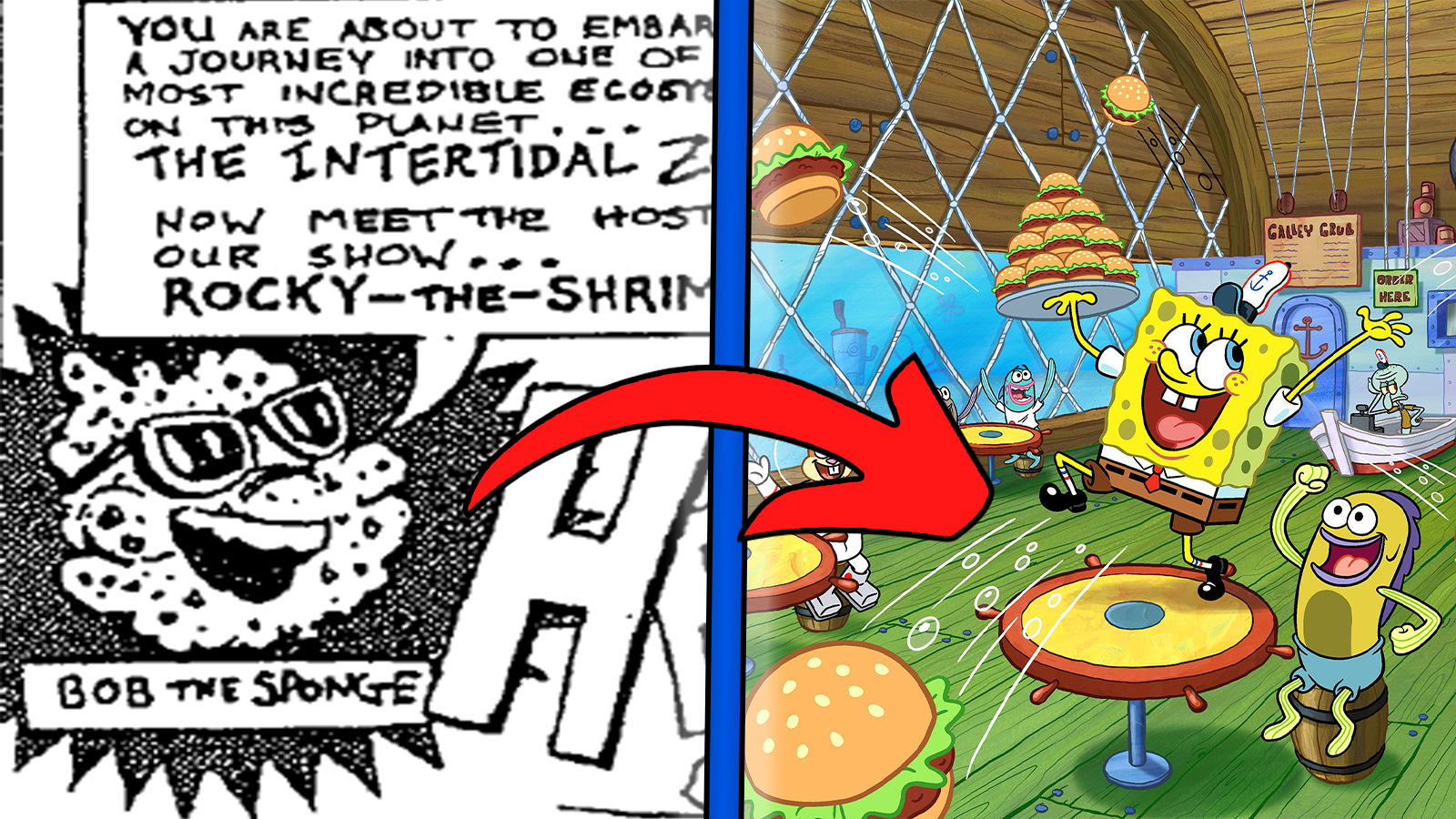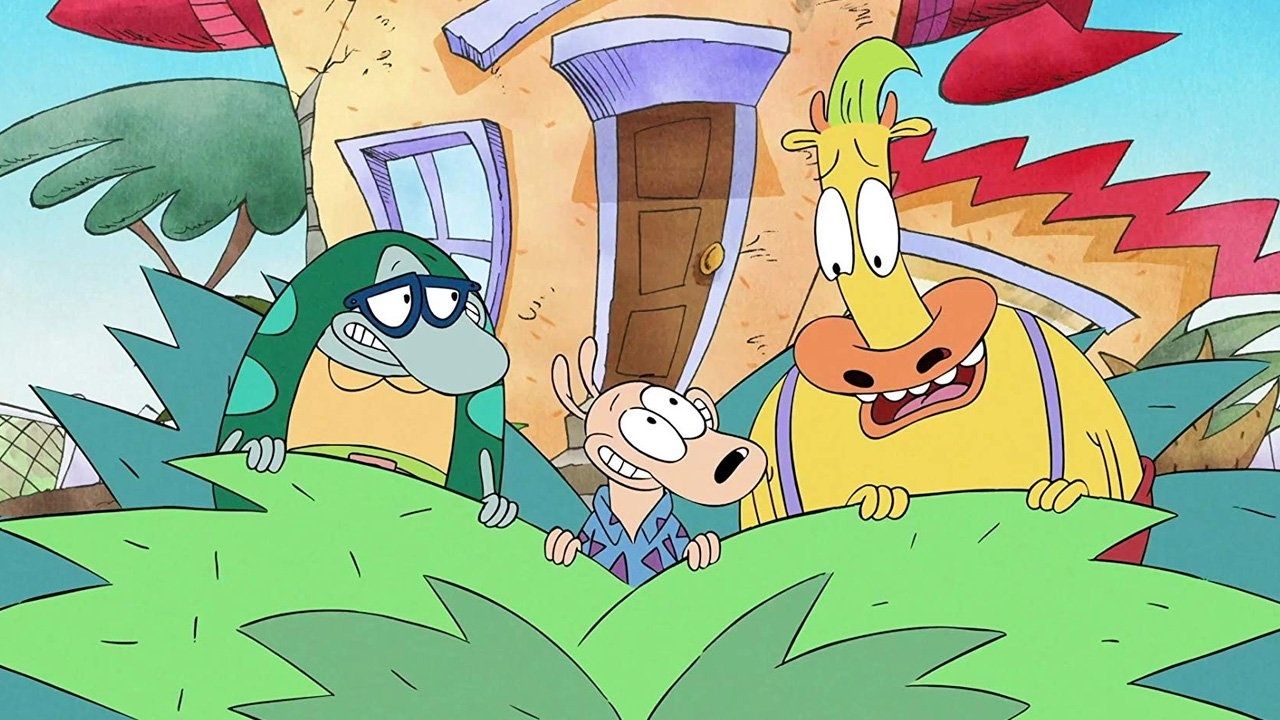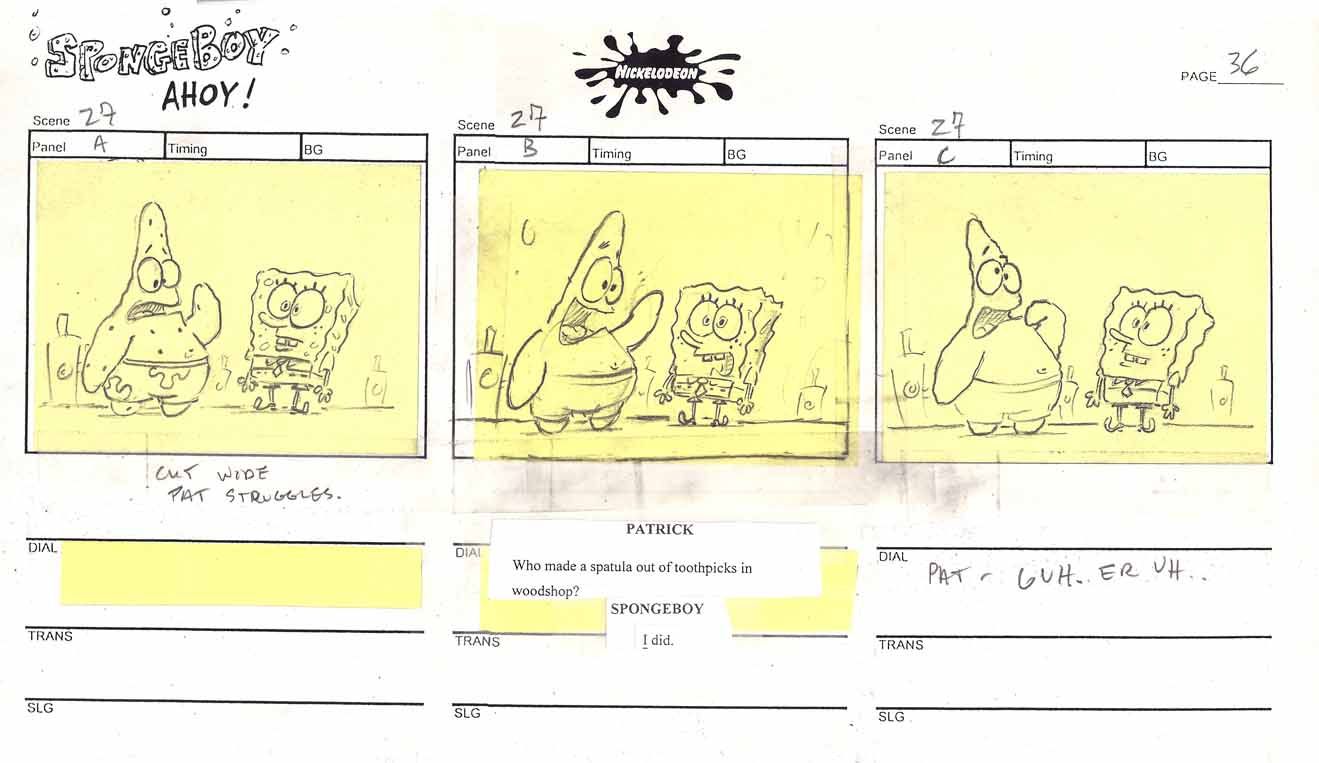It was in the late 1960s when a young Stephen Hillenburg would sit wide-eyed in front of his television watching The Undersea World of Jacques Cousteau, an oceanic educational program hosted by the late French explorer, and develop a life-long love for the subject. Pursuing the fascination all through his schooling, Hillenburg eventually graduated from college in 1984 with a degree in Natural Resource Planning and Interpretation, with a focus on marine life. Going on to become a marine biology teacher at the Ocean Institute in Dana Point, California, Stephen believed he had found his calling, at least, for a short time.
It is not to be understated that all through his studies, Hillenburg maintained a love for the arts, creating paintings and clay sculptures on his free time, often relating to the classes he would teach. It wasn't long before the director of the institute, Harry Helling, would take notice of the artistic flair, and requested the young college graduate to put together a comic book to help teach kids about tide pool ecology. Jumping at the opportunity to flex his creative muscles, Hillenburg quickly whipped up his own idea for the comic, titled The Intertidal Zone.
Featuring many anthropomorphic invertebrate sea creatures, the comic strip focused on educating children about marine life while giving them distinct personalities. One of these characters would stick around in the back of the young artist's mind: a sunglasses-wearing sea sponge, who would host the comic acting as a narrator of sorts, and being named Bob the Sponge.
Stephen's (and Bob's) Big Break
Always the naive dreamer, Stephen couldn't keep from indulging his addiction in the creative arts, and eventually realizing that while he'll always love marine biology, his true passion was calling elsewhere. Taking a chance on instinct, and with no prior animation experience, he packed up Bob the Sponge and his paintings and headed to The California Institute for the Arts, hoping to begin a new life as a television animator. Hillenburg's luck would skyrocket the day that Joe Murray showed up to a screening of his thesis short film, Wormholes, and shortly after hired Stephen as a director on his new cartoon series, Rocko's Modern Life.
Airing from 1993 to 1996, Rocko's Modern Life was an excellent stepping stone for the young marine biologist turned animation creative director to make a name for himself at the network. Though with the show's run coming to a close, Stephen needed to find a place to land, and due to some encouragement from a friend, decided to dust off his old comic book with Bob the Sponge, in order to see if he could re-work it into a full cartoon series.
Spending a good amount of time tinkering with who could be his lead, and describing what he was seeking as a "Jerry Lewis under the sea" type, Stephen came full circle back to his Bob sponge idea, though opting to give him a square design after most common household sink sponges. With coworkers from Rocko's Modern Life hopping aboard for the new project, Stephen Hillenburg was as ready as ever to put together his pitch for a brand-new cartoon.
A Pitch to Remember
Stephen had his star, his concept, and his crew all wrapped up nicely and ready for the executives at Nickelodeon. He also had put together a detailed "pitch bible," a collection of information meant to be presented at the pitch meeting for an animated show in order to demonstrate the overall concept, design, and characters. What the executives didn't expect that morning, however, was that they'd be receiving a presentation for what would be their biggest flagship franchise of all time. Known then as Spongeboy Ahoy!, copyright concerns with the name being similar to a brand of mop at the time would have its title and main character's name be eventually changed to SpongeBob SquarePants.
Dressed in one of his trademark Hawaiian shirts, a nervous Stephen Hillenburg stepped in front of the Nickelodeon executives while armed to the teeth with not only his pitch bible, but countless props. The one-time creative director had constructed a full underwater terrarium, involving miniature models of his characters and their setting, with which he would demonstrate plot lines while playing traditional Hawaiian music. Stephen had also recorded an early version of the theme song, playing it for the executives from a tape recorder he had inserted inside a conch shell. Through his incredibly realized concept, to his abnormal presentation, the executives became sure of two things that day — the first, that Hillenburg was a massive nerd; secondly, that he just won himself funding for a pilot episode of SpongeBob SquarePants.
Taking a chance on the bizarre concept, the studio greenlit the marine biologist's concept, giving the crew two weeks to write their pilot episode. When the day came for the executives to check their progress, they were shocked to see an entire wall of detailed storyboards, with a clear idea already nearly complete.
Hillenburg was happy to provide to them a demonstration of the show's plot, following along with the storyboards and providing voices to each of the characters and sound effects himself. After putting on his performance, Stephen watched in silent fear as the executives walked out of the room. Though he and his team would await nervously for their return, it would eventually be revealed that the execs only stepped out in order to calm down from laughing so hard.
Ripples of Impact and the Future
It wasn't long after the premiere of SpongeBob SquarePants that the old Bob the Sponge took the world by storm, breaking records and becoming among the most recognizable cartoons of all time. The show's massive popularity has continued more than 20 years after its initial airing, now at 13 seasons with a total of 270 episodes. The cartoon has also won countless awards, several spin-off series including the prequel Kamp Koral, a musical on Broadway, and three theatrical film releases with even more in the works at Paramount.
Merchandising and video games featuring the SpongeBob brand are endlessly abundant, and it's safe to say the success of the show has influenced not only generations of children viewers who have grown up with SpongeBob SquarePants memes (with quotes being commonly understood and treated almost as their own generational language), but the animation industry as a whole.
After three hit seasons of the show and completing its first feature-length film, The SpongeBob SquarePants Movie, Stephen Hillenburg decided to leave the series, believing he had accomplished everything he wanted to do with the concept, and not wanting it to "jump the shark". However, the cartoon would continue to be produced against his ideals by Nickelodeon to this day. Unfortunately, Hillenburg would pass away in 2018 due to complications with ALS, and continues to be deeply missed by the millions of viewers who either remember him fondly, or continue to tune in to view the show he had created.
A creative young marine biologist's dream to produce his own animated series had led him to legendary status, utilizing his distinctive comedic flair to create a franchise that would be beloved by millions of viewers for generations. Even after its creator's death, the permanent pop culture impact left by Spongebob Squarepants will continue to be seen for decades, becoming one of those legendary shows that changes the entire landscape of entertainment. With such humble beginnings, there was no predicting the story of Bob the Sponge's transformation into a monster success, though the world is far funnier and stranger for it, all the same.




